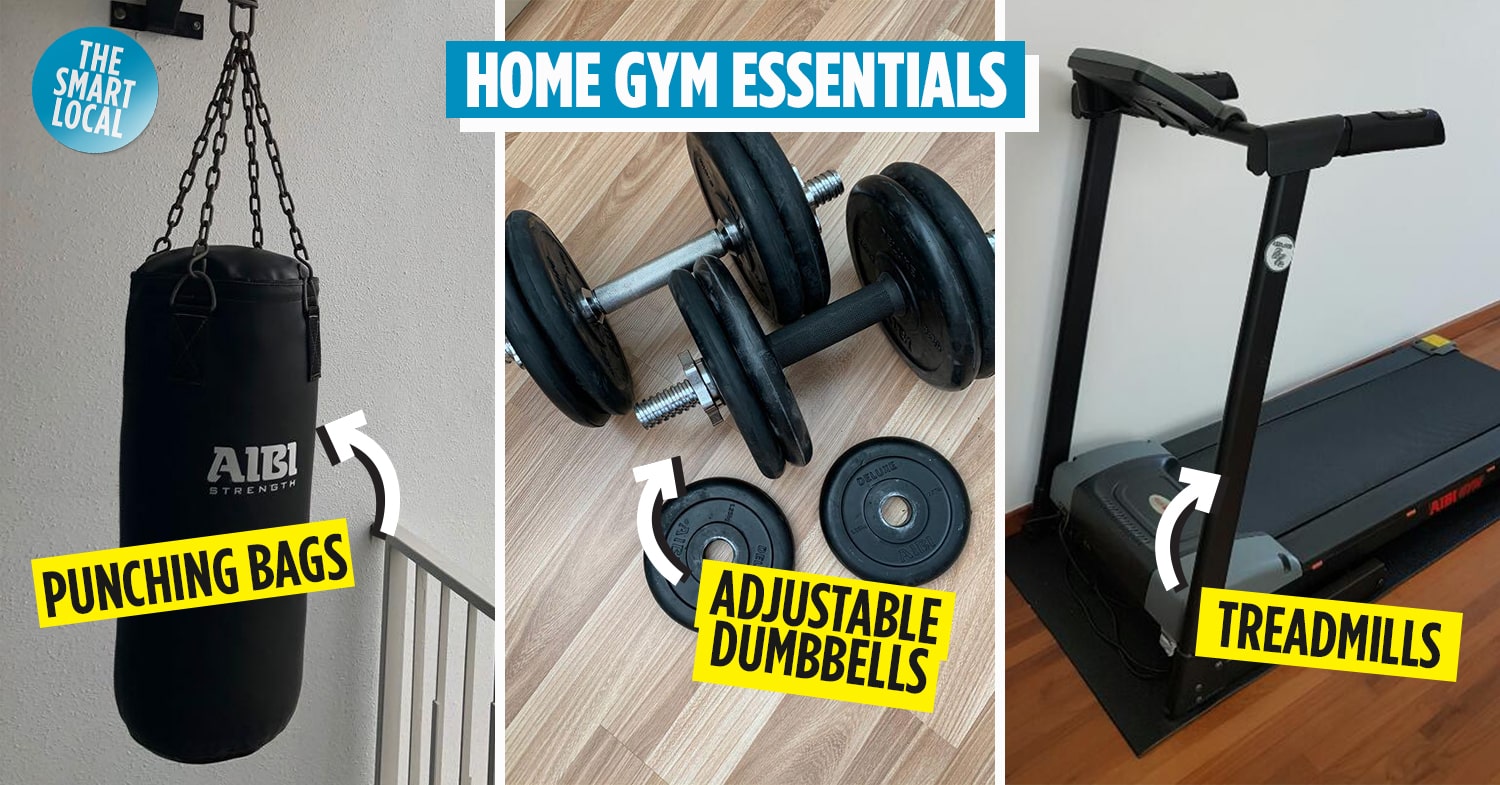How to set up a home gym
Despite the nagging guilt of wasting our membership fees, many of us have probably come up with all sorts of excuses to avoid fitting a gym session into our schedule. Tired after work? Skip it. Forgot your earphones? Don’t bother.
While the relief and gratification from choosing an evening of relaxation may be shiok in the short run, all those missed gym sessions can start to add up. And before you know it, you’re panting after climbing just one flight of stairs.
Whether you’re in need of extra motivation through convenience and accessibility or simply want to avoid the fees, queues, and potential judgement of strangers at public gyms, setting up a home gym can be a solid long-term solution. Not only is it great for your OTOT fitness goals, it’s also a backup for when gyms get closed amidst the shaky pandemic developments.
For more things fitness, check out:
- 30-day fitness challenges
- Online fitness classes
- All ActiveSG gyms in Singapore
- Swimming schools in Singapore
Before setting up a home gym
Setting up a home gym is a big commitment and even though it may be tempting to buy the most advanced equipment out there, you’ll have to consider the amount of space you have available. The American Council of Exercise recommends around 50 to 200 square feet for a multi-station gym, and ensuring you have enough space is crucial to prevent accidents.
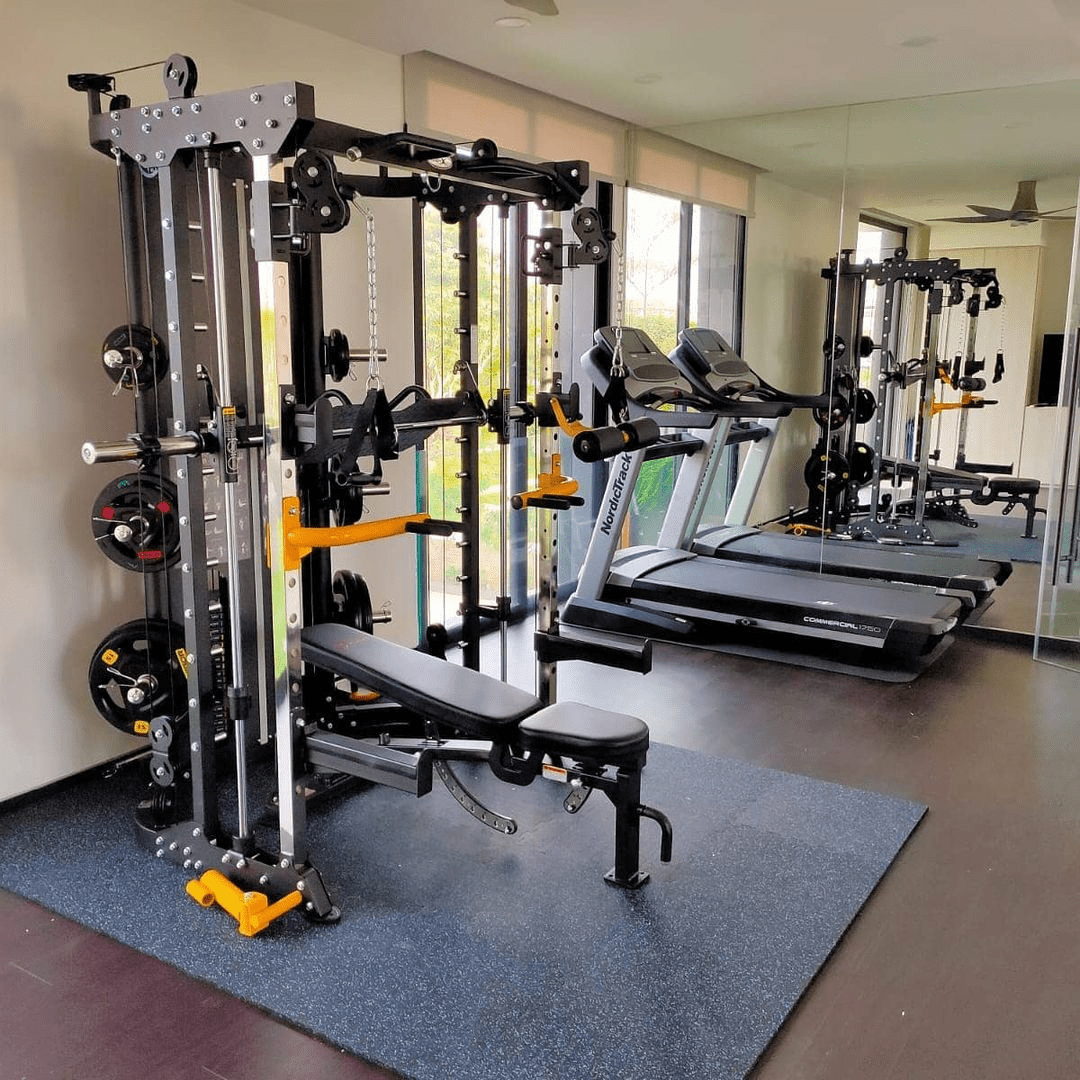
Image credits: @homegym.sg
Ideally, converting a spare room into your home gym would be the most efficient use of space, but if that’s not an option, just try to avoid placing your equipment in your bedroom. For the feng shui believers out there, placing workout equipment where you sleep is said to cause an imbalance of chi – thanks to the yang nature of exercising and yin nature of the bedroom.
If you’re into lifting weights, you’ll also have to keep in mind the noise you’ll be making for the sake of your neighbours – especially those that live directly below you. Buying gym mats can be extremely helpful in muffling the noise and keeping your floors undented, but do try not to drop your weights at the end of a set – no matter how heavy they might be.
Get gym mats at Decathlon or on Shopee.
Where to buy home gym equipment in Singapore
The home fitness scene in Singapore has been on the rise ever since our Circuit Breaker back in 2020, so it’s no surprise that there are plenty of stores to purchase your home gym equipment from. Below are some of the more popular and established stores you can check out, carrying wide ranges of products and earning positive customer reviews:
Types of home gym equipment
Free weights
1. Barbell & weight plates
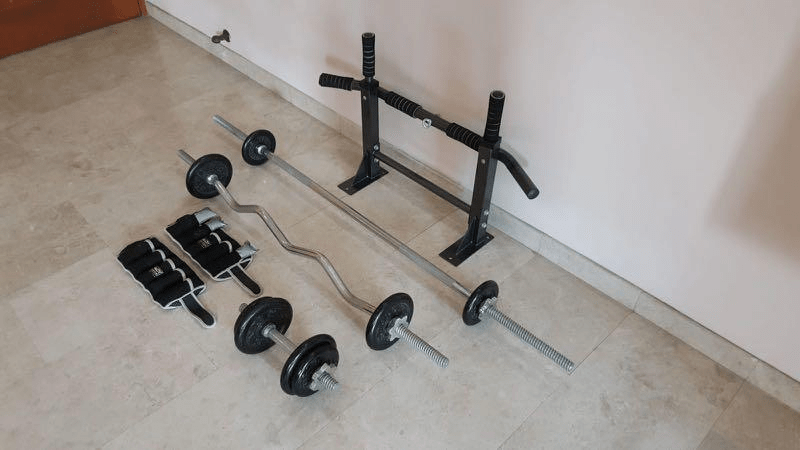
Image credits: Carousell
Every beefed-up gym bro’s favourite type of workout equipment, barbells are able to target many different muscle groups and help you get shredded fast. Barbells are typically either standard or Olympic, and each type comes with its own pros and cons.
Standard barbells are between 1.5M-1.8M long and typically weigh around 6KG-9KG. While they are lighter and more compact, they can usually only hold up to 90KG, which isn’t the most ideal if you plan on working up to heavier weights to improve your PR.
On the other hand, Olympic barbells are 2.1M long and weigh a standard 20KG. They also have a higher load capacity of 270KG-680KG, so they’re more suitable for serious weightlifters. Olympic barbells cost more and are typically sturdier, which can help to prevent accidents if you’re planning on lifting mad weights.
Understandably, weight plates get more expensive the heavier they are thanks to the larger mass of material required. With coated and cast iron types available on the market, there’s also a wide variety of material options which can affect the durability and production cost of the weights.
Note: Installing a mirror where you’ll be working out can help you check your form so you don’t accidentally injure yourself.
Barbell
Price range: $20 to $400
Standard Weight Plates
Price range: $4 to $450
2. Racks
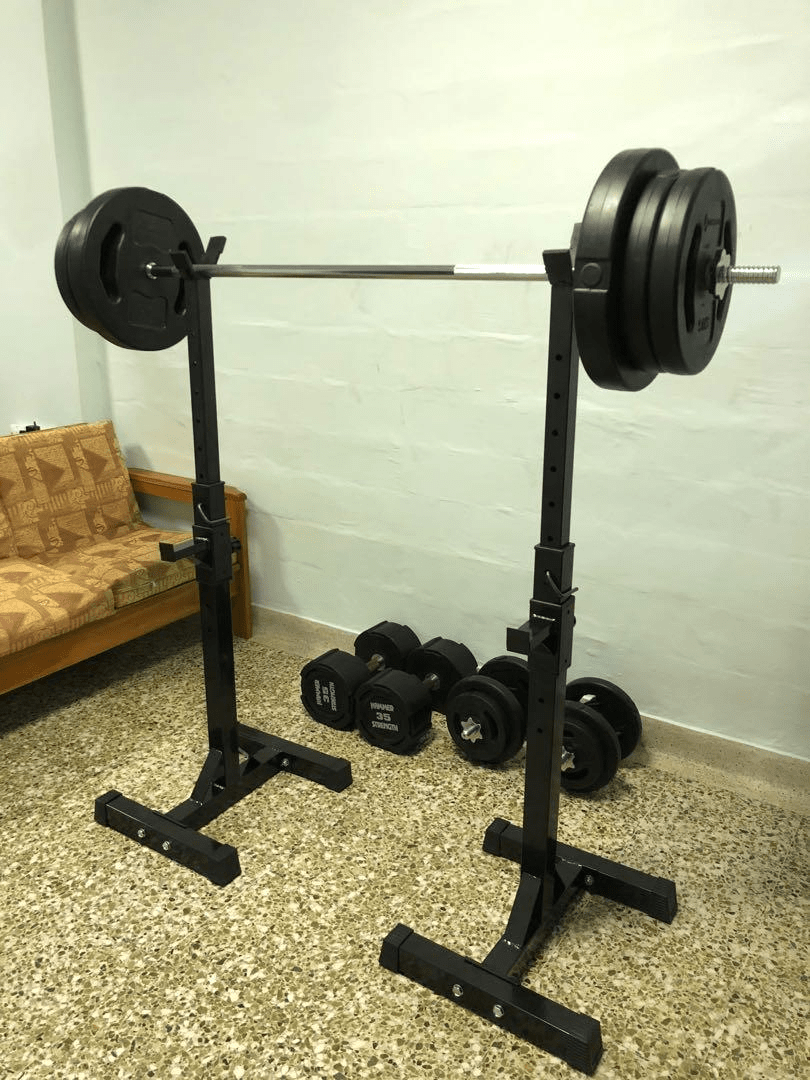
Image credits: Carousell
No matter if you have children, pets, or fragile pieces of furniture, keeping your weights on a proper rack can help to prevent your barbells from rolling around on the floor and causing accidents. Racking your weight plates and barbells can also help keep your equipment in tip-top condition, and make sure your home gym space remains free of unsightly clutter.
You can typically fetch a simple rack for under a hundred bucks but if you’re planning on storing multiple barbells and many weight plates, a bigger and extra sturdy rack to hold everything can cost a couple hundred dollars.
Price range: $80 to $500
3. Kettle Bells
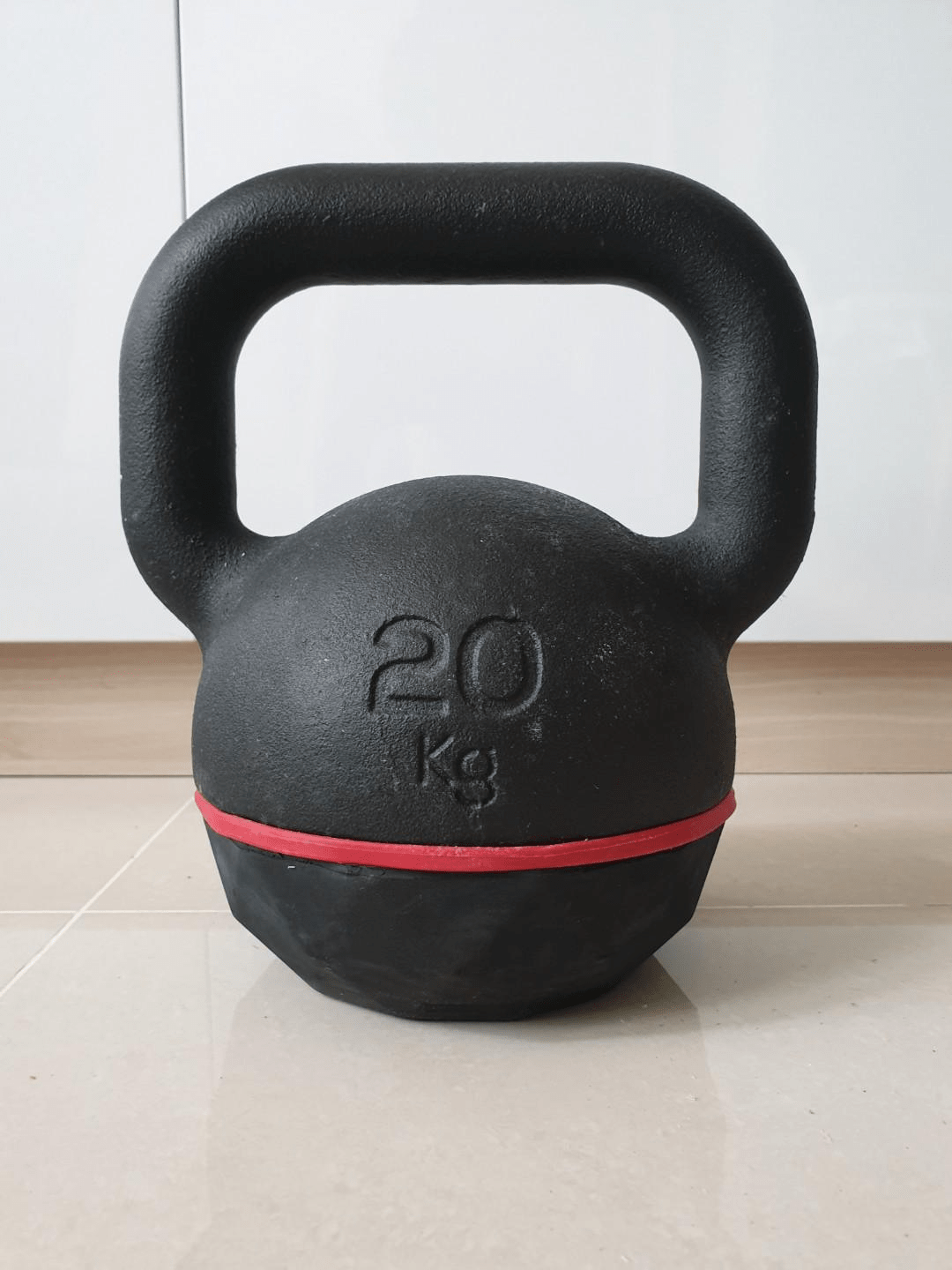
Image credits: Carousell
Another easy way to build muscle without elaborate gym machines, kettlebells are great for improving your forearm strength. Thanks to its thicker handle and offset centre of gravity, a stronger grip is required to lift the kettlebells, which results in stronger forearm muscles and grip strength. They’re also great to target your back and shoulders.
Kettlebells have become somewhat of a fitness trend in recent years. If you’re looking for a good home gym starter pack, you can invest in a simple set of kettlebells and find plenty of kettlebell-focused workout guides online, across varying intensity levels.
Price range: $15 to $120
4. Workout bench
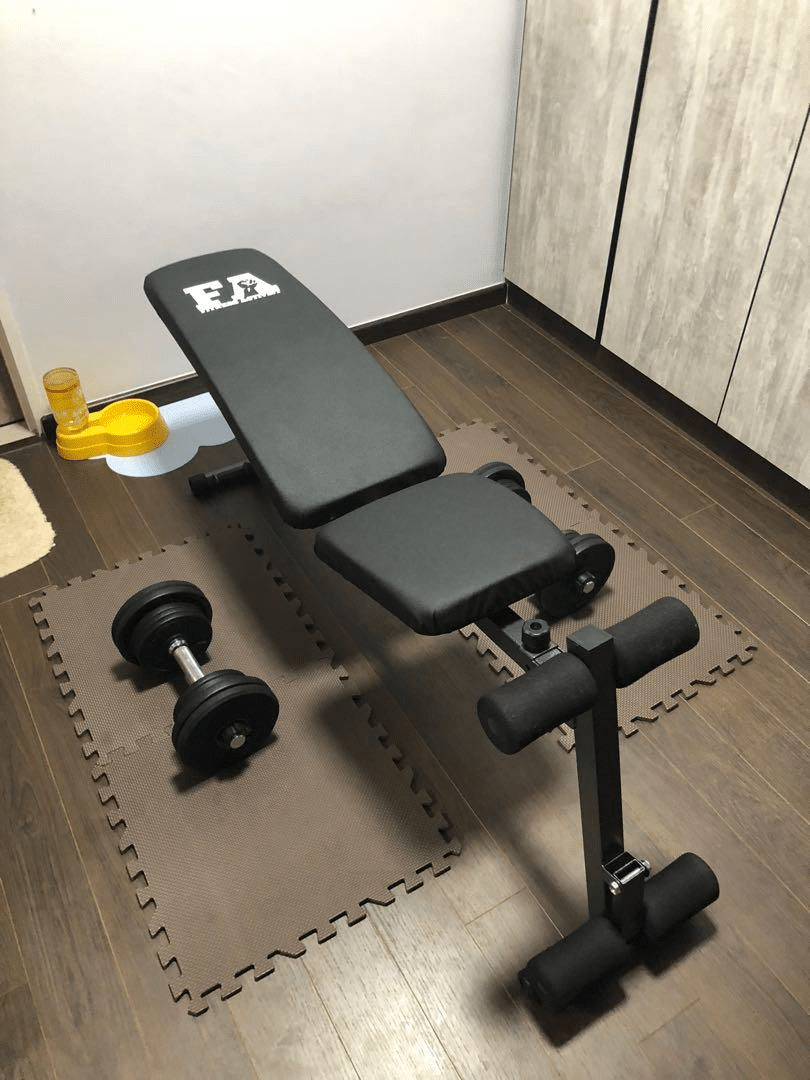
Image credits: Carousell
Seasoned weightlifters know how crucial it is to have a proper workout bench. It allows you to tackle a wider range of exercises compared to just standing, bending, and squatting, so you can target more specific parts of your body and get gains exactly where you want to.
Price range: $80 to $400
5. Dumbbells
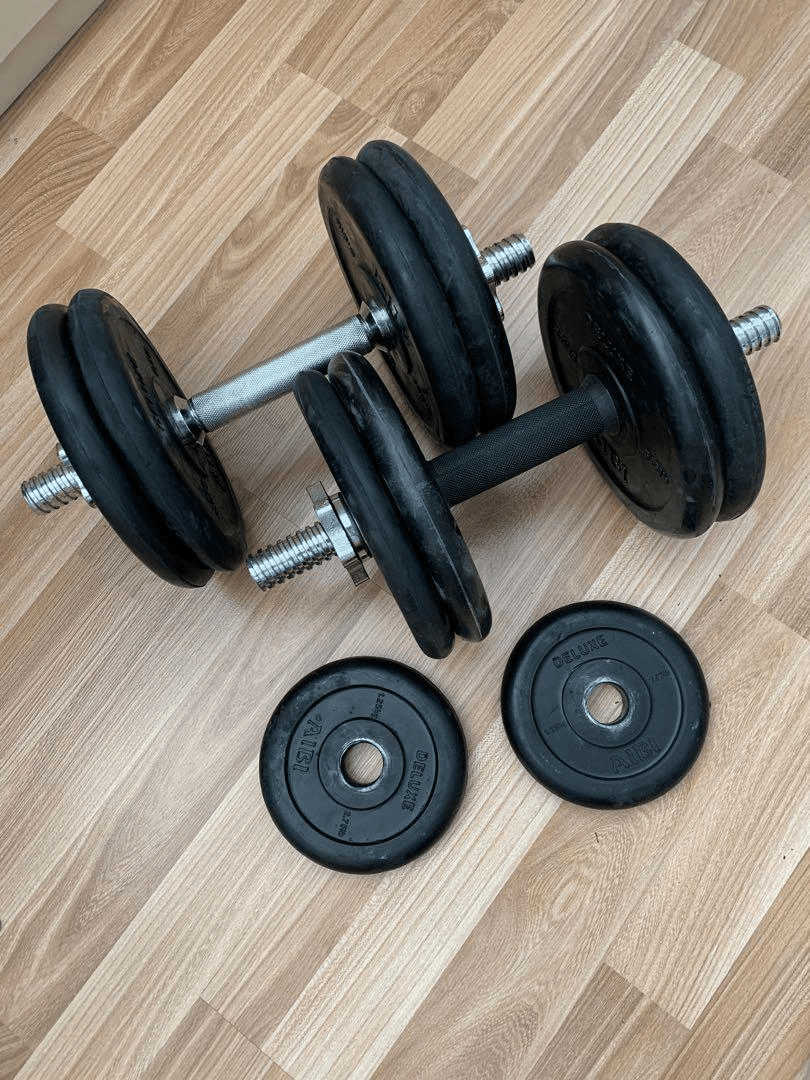
Image credits: Carousell
A list of weighted equipment would not be complete without mentioning the classic dumbbells. One of the easiest pieces of equipment to use, you can do a whole range of exercises with just dumbbells to slowly build up strength not just in your arms, but your back, shoulders, and even lower body as well – with exercises like weighted squats.
Although most of us are probably familiar with fixed dumbbells a.k.a. the ones that are typically brightly coloured with varying sizes, most equipment stores also sell adjustable dumbbells on which you can slide weight plates to your desired weight.
While it’s ultimately a matter of preference, adjustable dumbbells cost less and take up less space than their fixed counterparts. However, they do require some time and care to safely and securely adjust before and after each use, and are somewhat less durable thanks to the constant fiddling.
Fixed dumbbells
Price range: $8 to $150
Adjustable dumbbells
Price range: $60 to $250
Check out our full guide on Dumbbells in Singapore.
6. Medicine ball
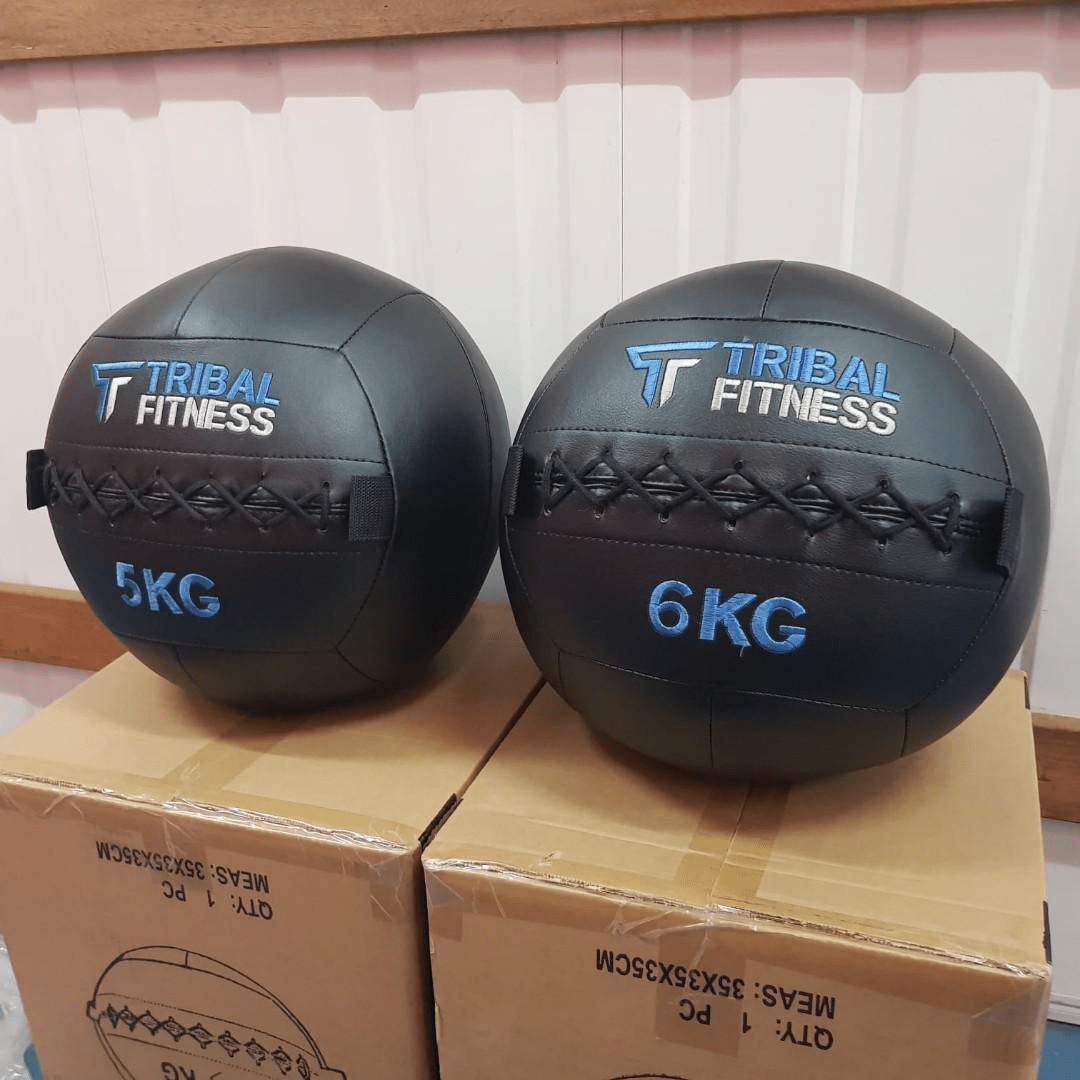
Image credits: Carousell
While it isn’t the most commonly used gym equipment, medicine balls are great for building strength as well as train your coordination. Usually sold in different hardness and sizes, medicine balls can be used in a whole range of throwing exercises, and builds muscle through motion repetition.
As versatile as a medicine ball may be, it’s not the most ideal form of weights for Singaporeans living in flats – a.k.a. the bulk of the population. Unless you want a heated complaint from your downstairs neighbour about the thunderous thuds from your medicine ball workout, it’s probably a better idea for non-landed property residents to stick to dumbbells and barbells.
Price range: $8 to $50
Cardio
7. Treadmills and elliptical machines
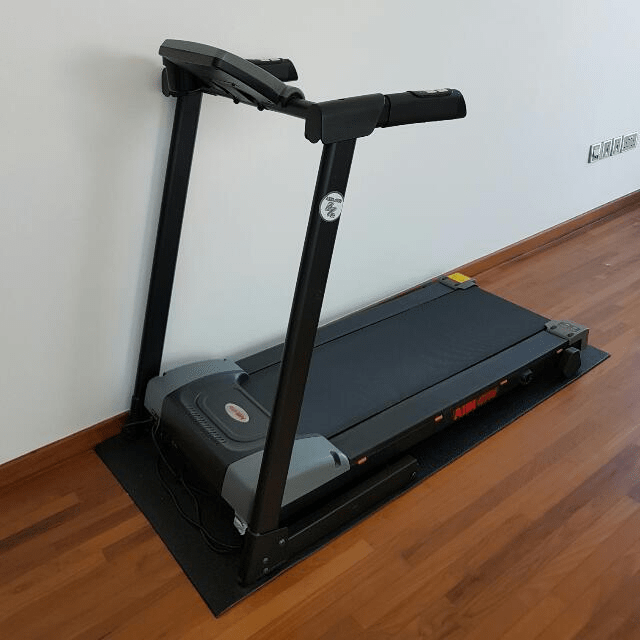
Image credits: Carousell
Bad weather has probably thwarted your outdoor run plans before. If you want to ensure optimal conditions 100% of the time, investing in a treadmill can be beneficial in the long run – pun intended.
While the more advanced treadmills can get pretty pricey, there are plenty of compact models on the market that cost as little as $200.
However, if you’re planning on using your treadmill for regular and intense running sessions, investing in one that’s of higher quality can help to provide a longer equipment lifespan as well as prevent nasty accidents.
Check out our full guide on Treadmills in Singapore.
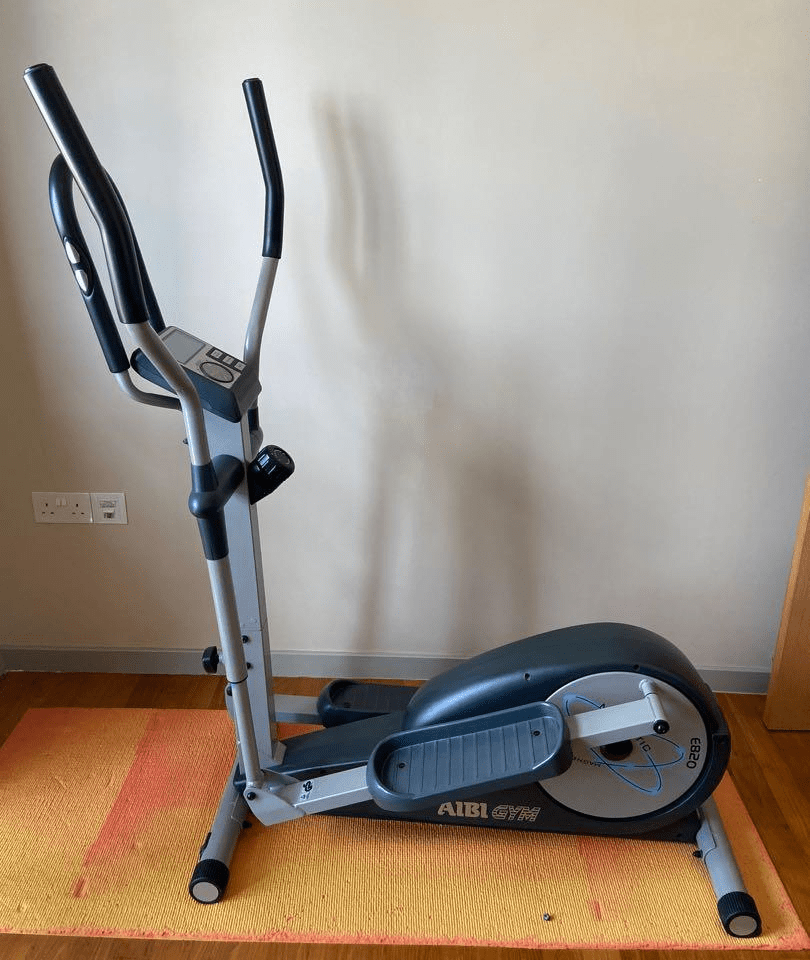
Image credits: Carousell
Similarly, elliptical machines are also an easy way to get a full-body workout while at home. When compared by the minute, elliptical machines actually burn more calories than walking on a treadmill thanks to the added upper body involvement – which is ideal for casual fitness enthusiasts.
Even if you aren’t a hardcore marathoner, having one of these machines at home can also help you to clock your daily steps and get a low-intensity workout in if you wish to set the speed and resistance levels to something more comfortable for your fitness level. Plus, you can even watch your favourite TV show while you’re at it.
Price range: $200 to $2500
8. Rowing machines
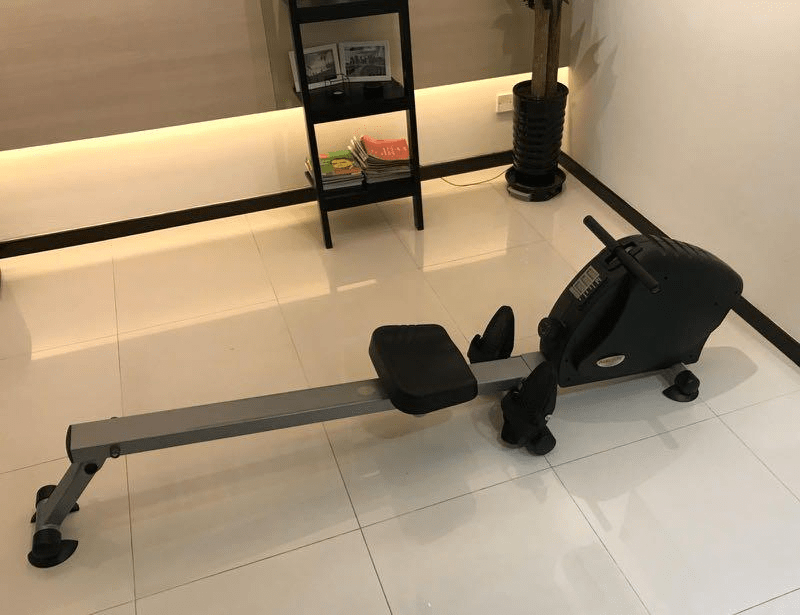
Image credits: Carousell
Arguably one of the most exciting machines at the gym, rowing machines can help you feel like you’re on a rowboat without the danger of falling into the water. Working your full body, rowing machines build more muscle than treadmills and are better for those who have weak joints or past injuries affecting mobility.
Basic rowing machines can get the job done but if you’re willing to splurge, you can even find some high-tech models fitted with screens that have games pre-installed into the system. From tracking your heart rate to collecting coins in a Mario Kart-esque game, investing in a pricier model can help to keep you motivated and engaged.
Price range: $200 to $2000
9. Punching bag
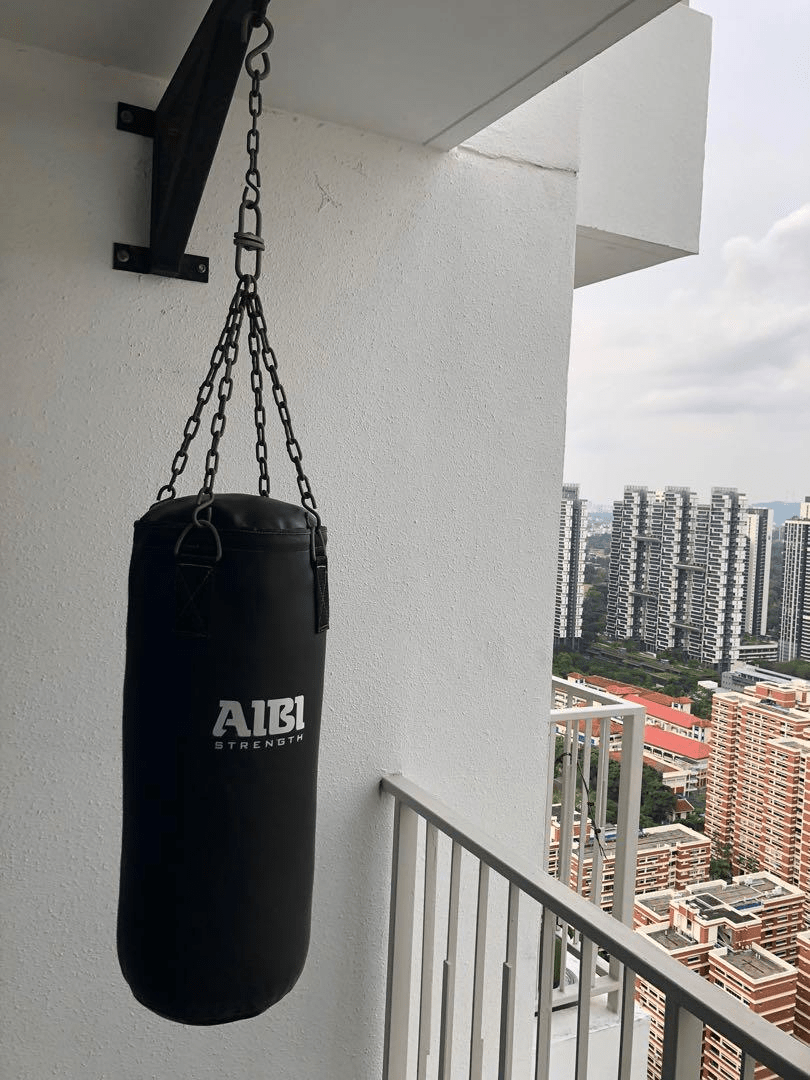
Image credits: Carousell
Let’s be honest, there’s nothing like a good punching sesh to vent all your pent-up rage and frustration. Since real-life violence is never the answer, the next best thing would be to get a punching bag.
While you’ll also need to invest in boxing gloves to avoid nasty bruises, a punching bag workout can help you clock some heart-pumping cardio while working your upper body muscles. Standing punching bags are a cheaper option, but hanging ones are generally heavier and provide more resistance so you can punch freely without worrying about the bag tipping over.
Price range: $70 to $400
10. Stationary bike
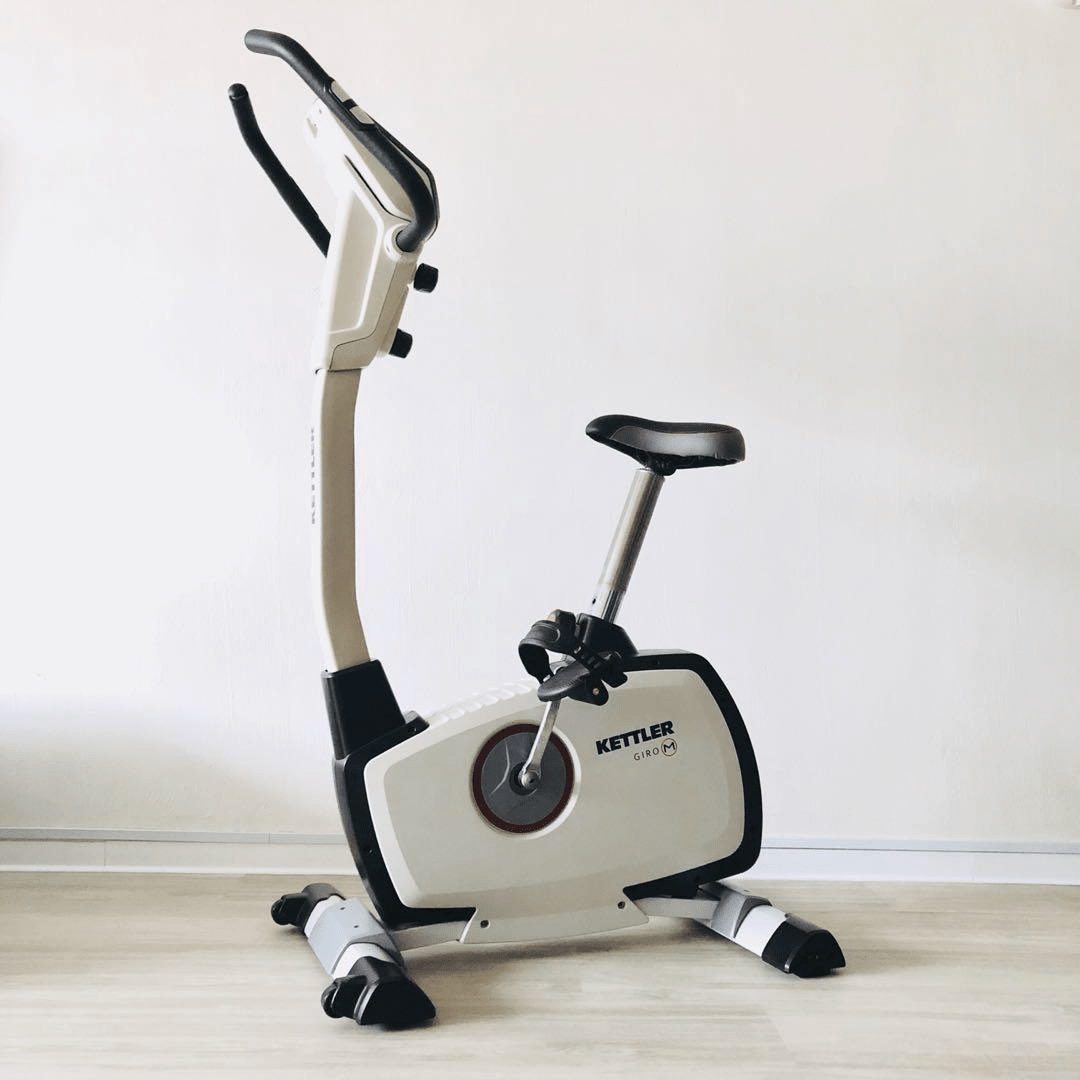
Image credits: Carousell
Even though actual cycling is all the rage these days, exercise bikes can be great if you want to work out without having to brave the elements and wear a mask. Better yet, exercise bikes are also perfect for those who might not know how to cycle – hey, no judgement here.
Price range: $200 to $1500
Check out our full guide on Exercise bikes in Singapore.
Miscellaneous
11. Pull-up bar
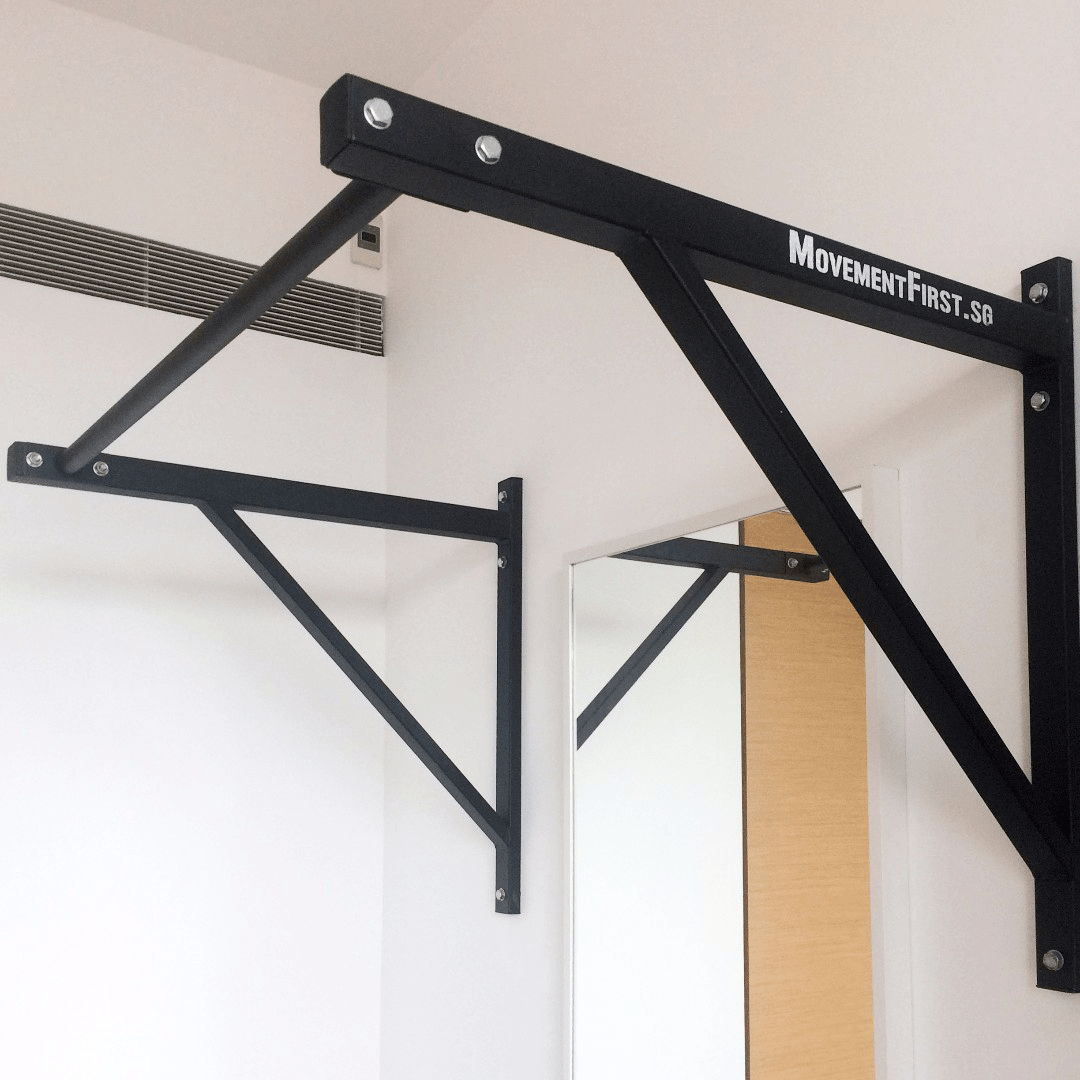
Image credits: Carousell
The dreaded pull-up is every student’s NAPFA nightmare. Whether you want to finally conquer the pull-up station before graduating or need to get an A before IPPT in NS – having a pull-up bar can help tremendously. Needless to say, it’s also a space-saving and relatively low-commitment instalment for adults to get quick upper body workouts in.
If you don’t feel like mounting things to your wall, you can also opt for standing pull-up bars and door frame pull up bars which are much more convenient. Just make sure that whatever surface you’re attaching the bar to is sturdy enough to carry your weight – you don’t want an expensive home demolition mishap to happen.
Price range: $15 to $300
12. Yoga mat
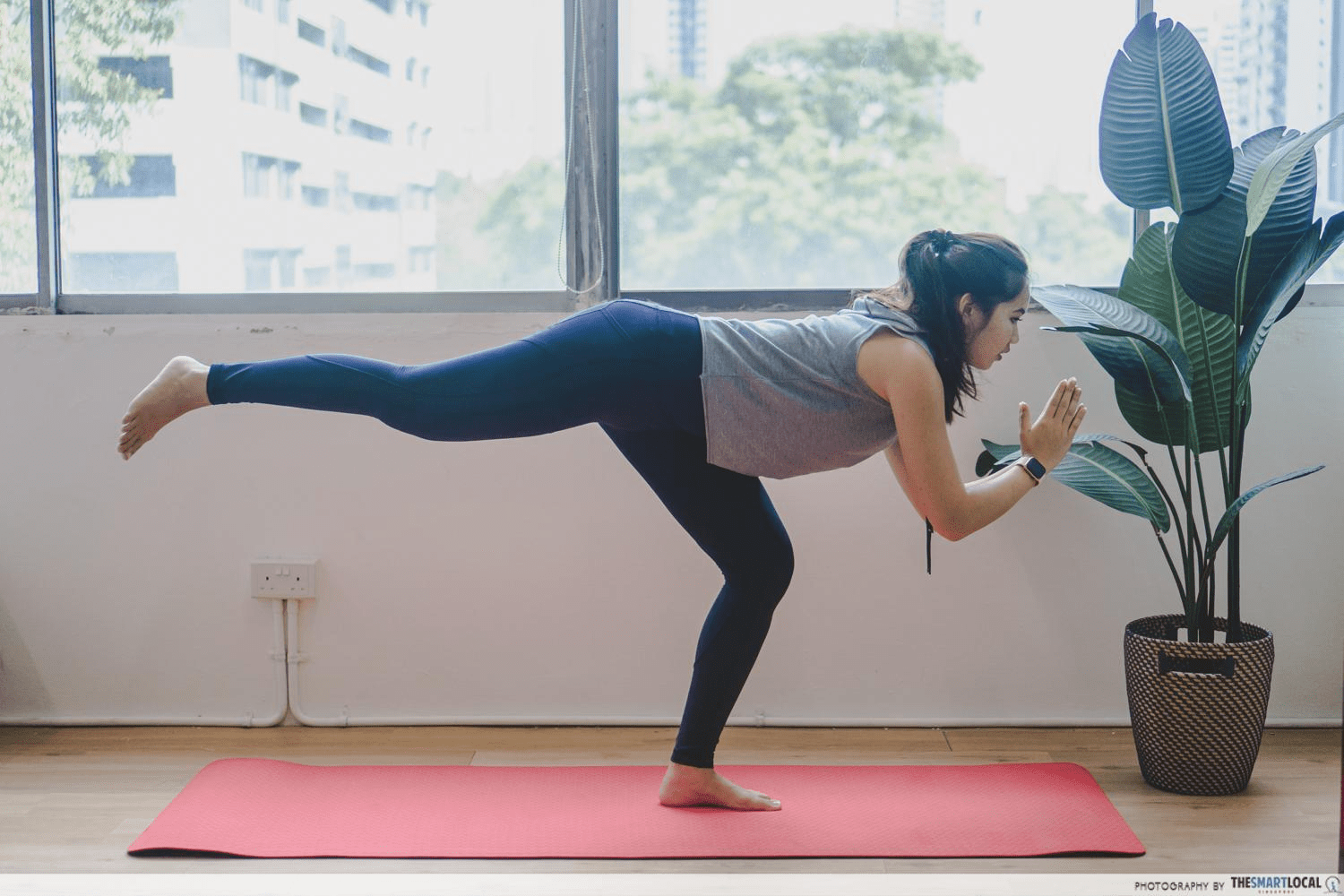
Yoga mats are perhaps one of the most basic and fuss-free additions to any home gym. Not only are they inexpensive, they can also be used for a multitude of things like stretching and doing exercises that use body weight instead of weight equipment.
For exercises that require you to get down on the ground, be it bodyweight workouts, yoga or pilates, having a yoga mat also pads your joints safely and prevents you from slipping and sliding all over the place – especially if you’re dripping sweat.
Price range: $10 to $130
Check out our full guide on Yoga mats in Singapore.
13. Resistance bands
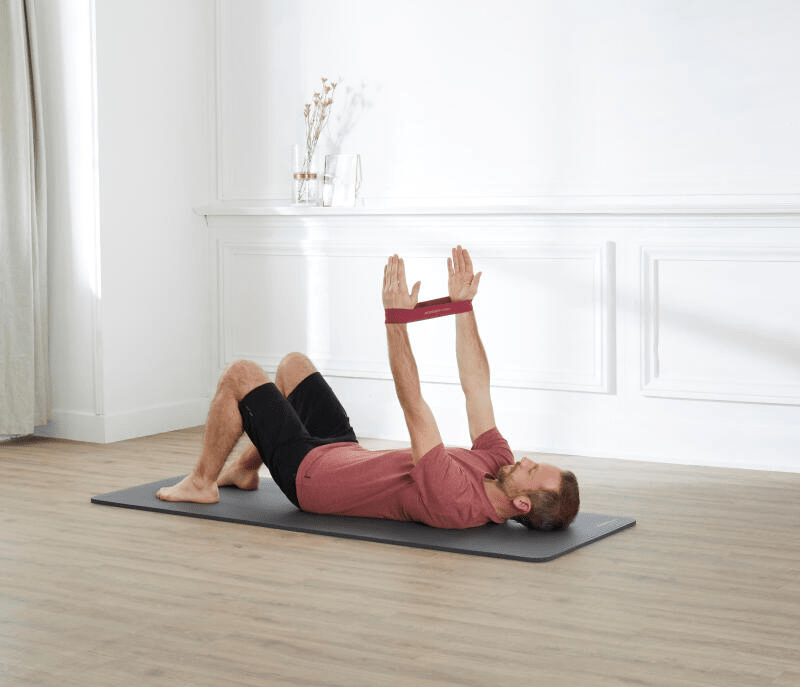
Image credits: Decathlon
If you want to zhng your workout without spending a small fortune on weights, incorporating resistance bands can work wonders for your muscles and strength development. These bands come in a range of thickness levels so you can pick and choose, depending on how strong you want the resistance to be.
Price range: $10 to $150
14. Gym ball
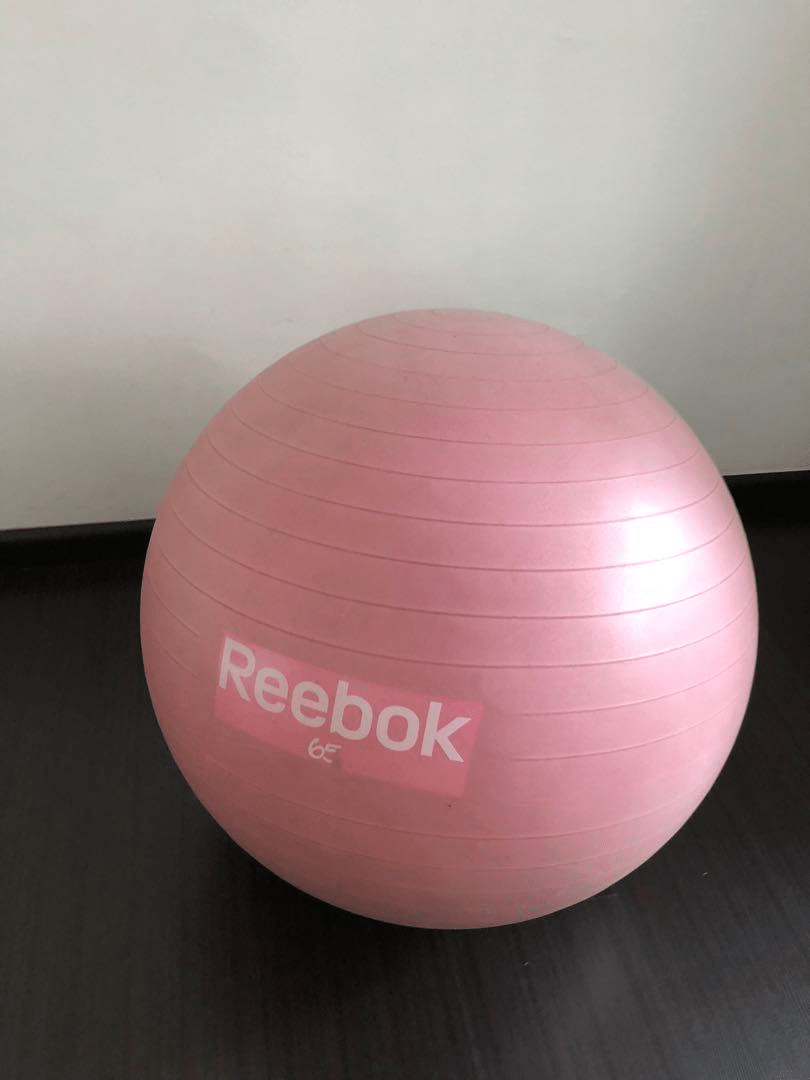
Image credits: Carousell
Mainly targeting your core, buying a gym ball can be extremely helpful in getting those toned abs you’ve always wanted. Swapping your WFH chair out for a gym ball can also help you train your stability and engage your core throughout your 9-6.
Bonus: Offering mobility beyond your usual stationary stretching routine, a gym ball can help you to achieve deeper stretches after an intense workout.
Price range: $10 to $60
15. Foam roller
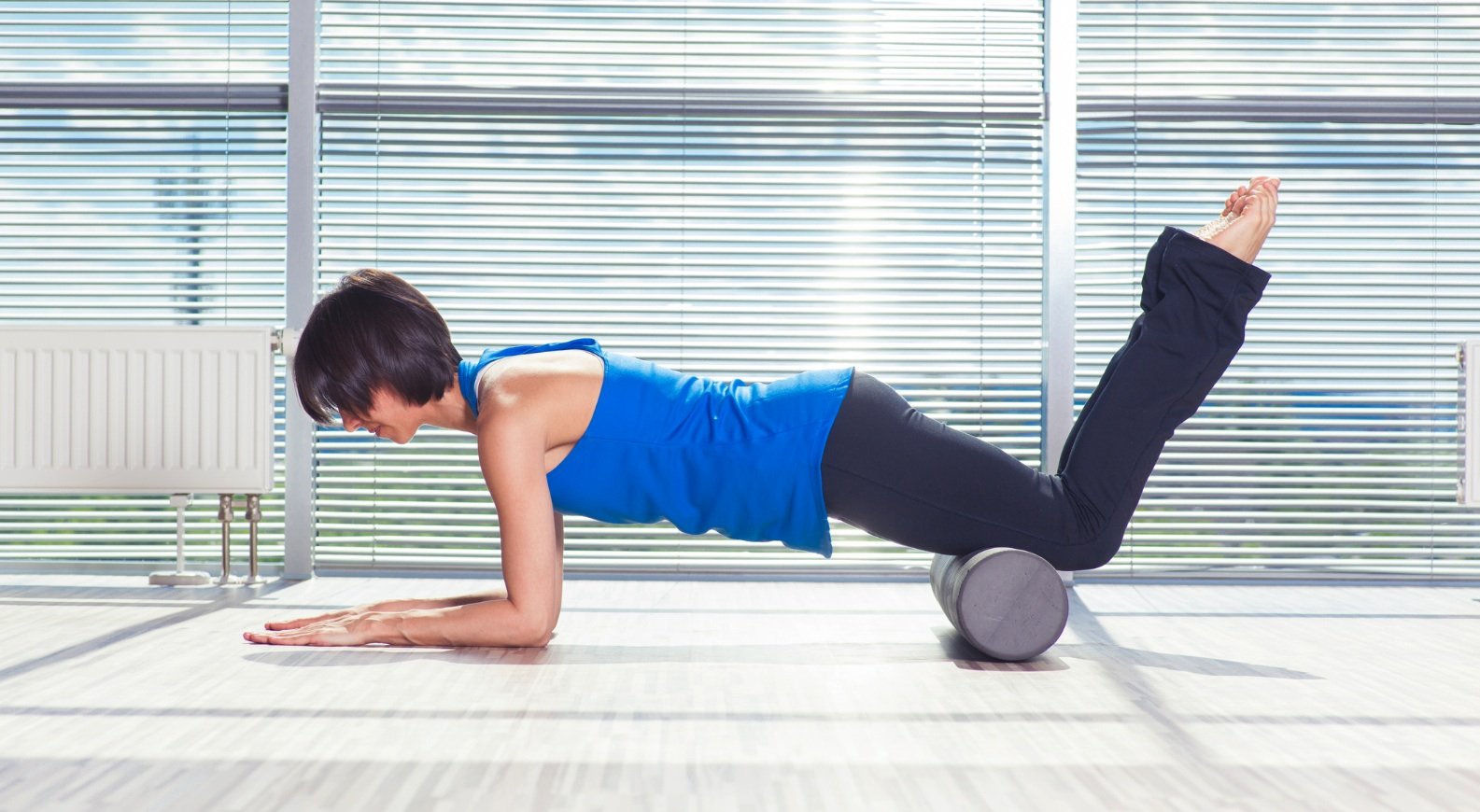
Image credit: Mama Fit
Even though muscle aches are arguably the best part about exercising – serving as a badge of honour for all the hard work you’ve put in – having a foam roller at hand can help you ease any unwanted tension and knots. Better yet, it can also help you to warm up your muscles before working out, so you don’t have to worry about getting cramps.
Price range: $10 to $40
Check out our full guide on Foam rollers in Singapore.
Setting up a home gym in Singapore
The long list of gym equipment available on the market coupled with their not-so-cheap prices can make setting up a home gym seem like a lot of work and financial commitment. However, when we add up the lowest cost of all the equipment listed, it rounds off to roughly $1,200, which is lower than the $2,327.64 average of annual gym fees in Singapore.
Even though better quality equipment will cost more, most of us will likely tailor our home gym to include only the equipment we’ll actually use, so that it’s more cost-efficient and optimised for the space available.
No matter if you’re still trying to fulfil your New Year’s resolutions or simply want a customised gym situated a few steps away from your couch, a home gym can be a great long-term investment not just for your fitness levels, but your wallet as well.
For more ways to upgrade your home, check out:
- Home KTV options
- Indoor BBQ grills
- Supermarket vegetables to grow at home
- Portable air conditioners
- Table lamps
Cover image adapted from Carousell (L-R): Punching Bag, Dumbbells, Treadmill.
